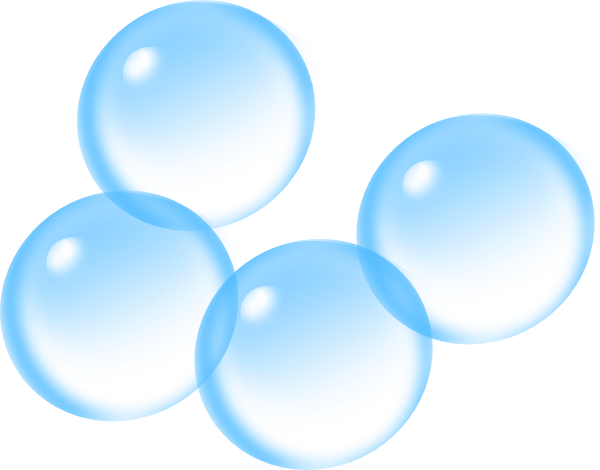Physics of Bubbles

Pressure Surface Tension Merging Stability Color Change
Pressure
The pressure difference between the inside and outside walls of a soap bubble is dependent on the surface tension and size of the bubble. The pressure inside the bubble must be slightly higher than the pressure on the outside, which would seem as though it would cause the bubble to pop. However, the surface tension provided by the bubble prevents this from happening.
The general relationship between the size of the bubble, surface tension and pressure is:
http://hyperphysics.phy-astr.gsu.edu/hbase/surten2.html
Where,
Pi is the internal pressure
Po is the external pressure
T is the surface tension of the material
and r is the radius of the bubble.
This relationship is found by treating the bubble itself as two separate hemispheres, where the forces of the upper hemisphere are in balance with the forces of the lower hemisphere. When the relationships of the forces of the upper and lower hemispheres are equal to each other, a bubble can exist.
The forces on the upper hemisphere are equal to the difference in internal and external pressure, multiplied by the area of the equatorial circle.
http://hyperphysics.phy-astr.gsu.edu/hbase/surten2.html
The forces of the lower hemisphere are equal to the downward forces of both hemispheres, which is twice the surface tension multiplied by the circumference of the equatorial surface
http://hyperphysics.phy-astr.gsu.edu/hbase/surten2.html
When two or more bubbles meet, the pressures become slightly more complicated. Smaller bubbles have higher internal pressures than large bubbles. This pressure difference can be modeled by the Young-Laplace equation:
http://en.wikipedia.org/wiki/Young%E2%80%93Laplace_equation
Where,
is the pressure difference
γ is the wall tension
is the unit vector normal to the shared surface
H is the average curvature
R1 and R2 are the radii of curvature for the bubbles.

